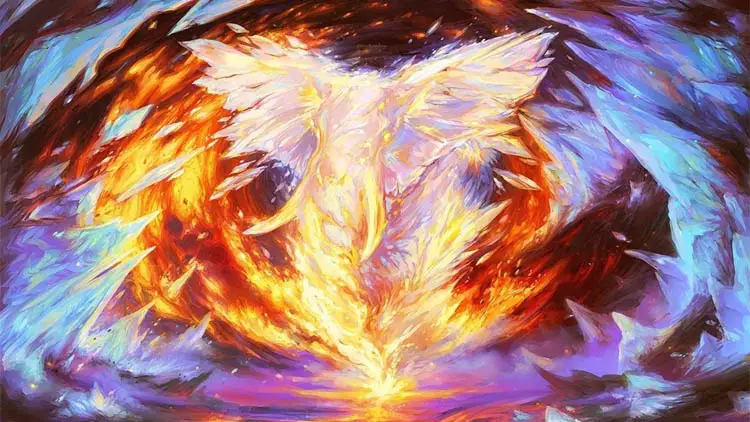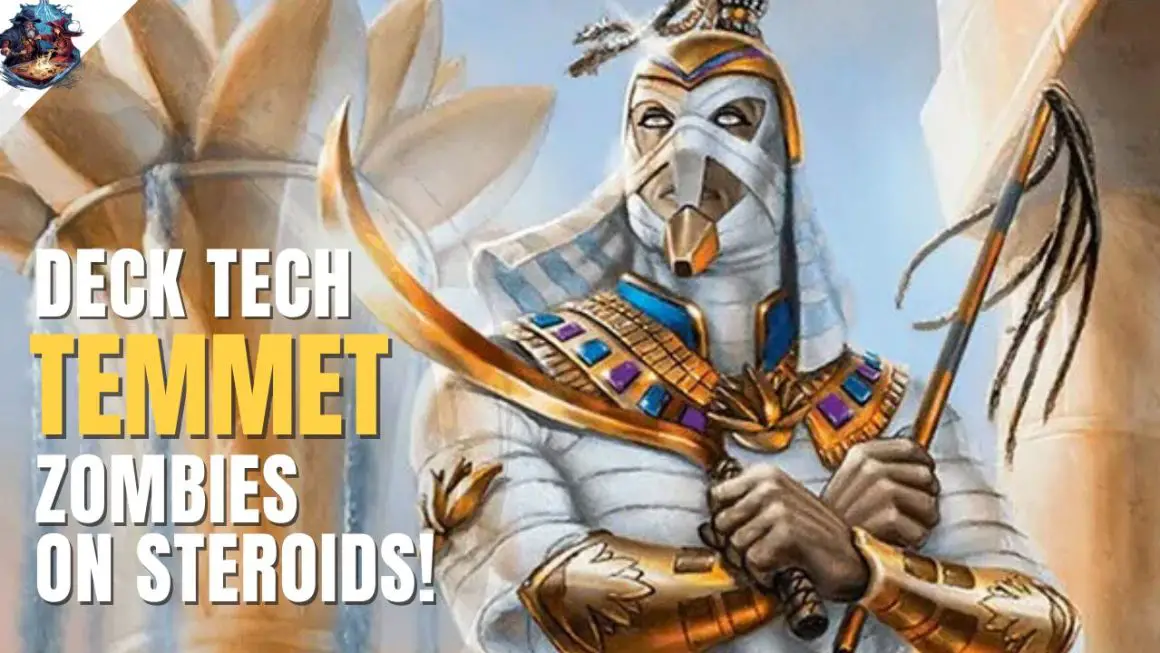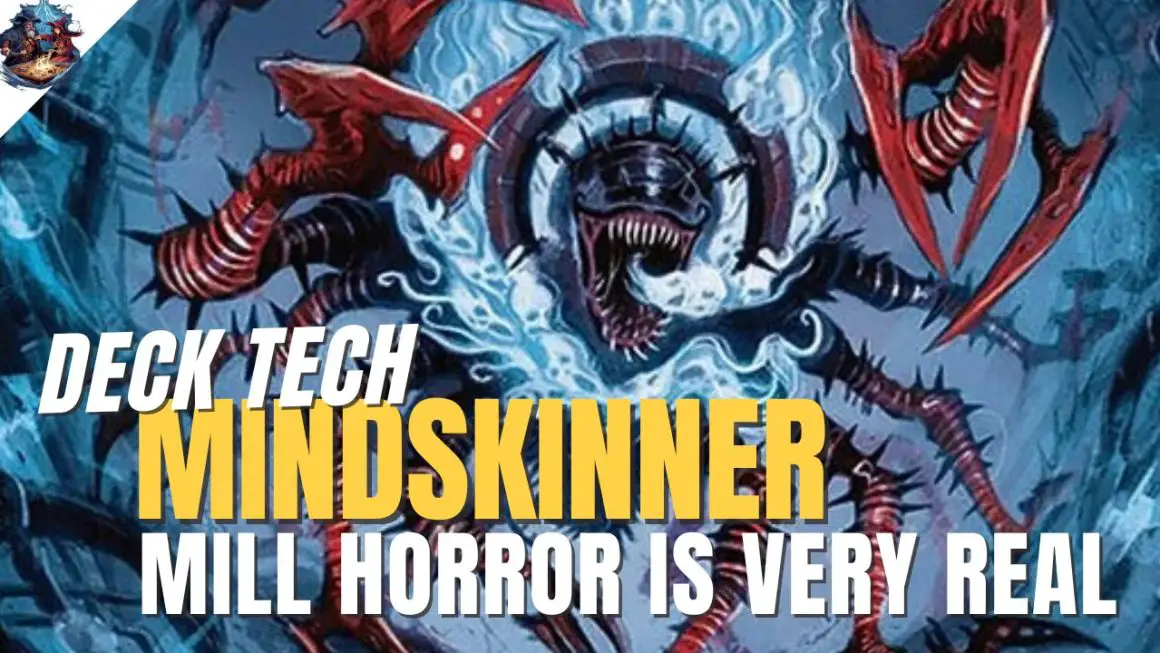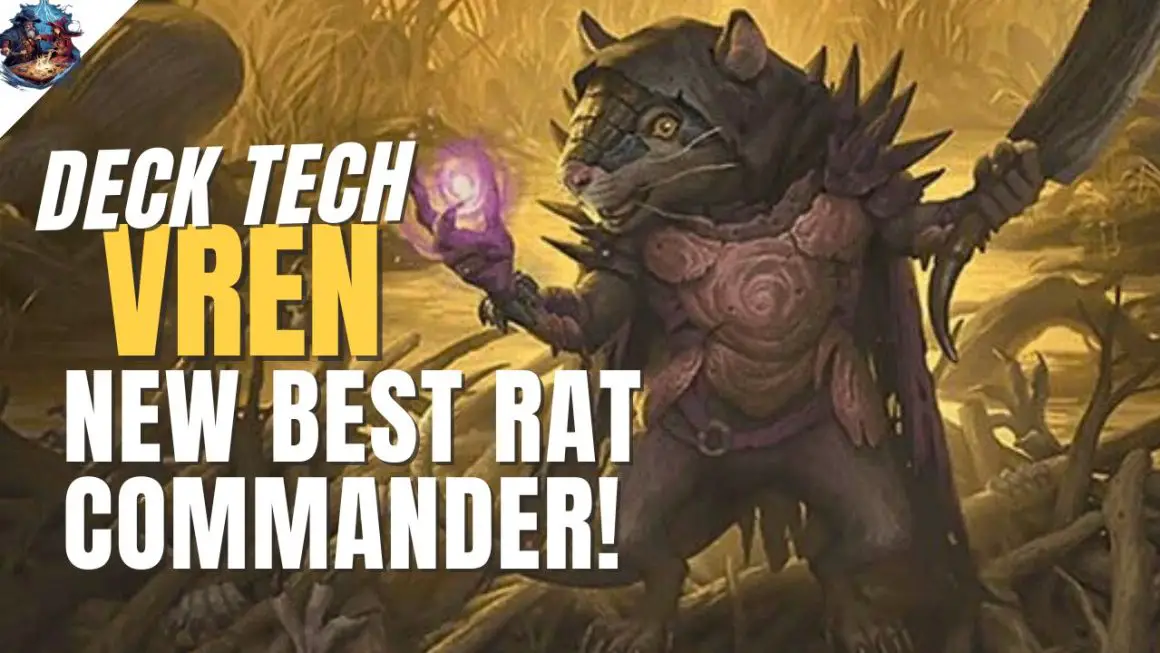Over the years, formats like Standard and Modern have stayed in the spotlight because they are often played in tournaments. All that changed in the past 2 Covid years, and the casual, friends-get-together, Commander format grew overwhelming popular, till today where it’s the talking point of almost anything with regards to paper Magic: the Gathering.
But it wouldn’t be right to attribute all of Commander’s popularity to the pandemic. The format had been seeing steady growth even before 2020, so what is it that makes appeals to every Magic player?
Commander (aka EDH) gets back to the heart of what makes Magic great. The original game, as designed by Richard Garfield, was a bit different than today’s game, but ultimately owes the majority of its success to core principals and play mechanics that were introduced with the original Alpha set in 1993. Let’s take a look at the game description from the first Magic rulebook:

“Magic is a two-person card game in which the cards in your deck represent the lands, creatures, spells, and artifacts at your disposal. When you play the game, you pit your deck against your opponent’s deck in an arcane duel, and the winner takes one random card to keep from the loser’s deck. Over time, your deck will grow and shrink; it will have weaknesses you can try to fix by winning the correct games, and strengths with which you can barter between games.
Be especially on your guard when playing new opponents. They will likely have spells and artifacts you have never seen before, and they will certainly have unique deck mixes and styles of play. Also, watch out for old rivals — anyone can have a magical encounter with a stranger and pick up some new surprises. No matter who your opponent is, never forget the possibility of learning a trick or two with the same old cards.”
Wow, now if that doesn’t help us realize why Commander is so popular I don’t know what will. Unlike defined formats that have defined metas, the Commander format really helps to bring back many of the original elements of Magic that helped make it so popular with casual gamers. The unknowns that abound in this rule book’s description are centered on encountering new and exciting things!
How exactly does Commander become popular by bringing out all the best elements of Magic’s original design? Let’s break it down bit by bit.
Your Decks are Constantly Evolving and Never Complete
“Over time, your deck will grow and shrink; it will have weaknesses you can try to fix by winning the correct games, and strengths with which you can barter between games.”
Well, right off we might spy a problem here. Our decks can’t grow and shrink as the format demands we play with a fixed numbers of cards. Yet, I would contend that the deck’s value and consistency will ebb and flow as you and your play style grow. While your deck no longer grows with each victory, you certainly grow after each play session. You learn from your play patterns and figure out new directions to take your deck. You make changes, adapt, and alter the deck based on losses and even a few victories.

Perhaps you lost a game to some simple Artifacts and now you’ve swapped out a few value creatures like Phyrexian Rager for a card that answers those issues — like Phyrexian Tribute? Maybe you found your Lord of the Pit to be a bit too gimmicky and you swapped it out for a Minion of Leshrac, or perhaps Lim-Dul the Necromancer himself? Maybe the next Commander Legends set will have a Leshrac card to try out in your new deck? Regardless, the idea that your deck grows and morphs over time is what I’m touching on here. Commander does exactly this. We are constantly tweaking our decks or trying new spells.
When we try out new spells in our decks we aren’t necessarily just using the freshest or most recent sets. Magic has quite the index of cards, and even when you’ve been playing nearly 30 years…well, there are older cards you may have forgotten about for the last decade or two. Suddenly, you might stumble across a few and then you’re back to making changes and experimenting with cards and strategies all over again.
The Single Card Restriction is in Fact a Blessing
Sometimes we don’t have the cards we want, and worse yet we don’t have the money to buy them. That doesn’t mean there aren’t other ways to acquire cards. No, I’m not talking about doing anything nefarious, or otherwise uncouth. I’m simply suggesting that you trade to get what you want. The good old fashioned bartering system is alluded to in the game’s original description, “…you can barter between games.” That’s the kind of serious fun that Commander brings to us. When your collection requires you to really only need one copy of any given card, well it’s easy to amass additional trade fodder.

For instance, let us say you opened up two Jeweled Lotuses! Sweet! Rather than having half a playset, I think you just got some sweet trade fodder, my friend. You can now use the extra one to shore up some of those weaknesses your deck might have had. No matter what silhouette is lurking in the background, you can find exactly the right card once you brainstorm up a few options. Just remember the advice, “Sometimes winning a duel can be a lot less profitable than a successful trading session.”
Every Commander Game is a Breath of Fresh Air
“Be especially on your guard when playing new opponents. They will likely have spells and Artifacts you have never seen before…”
Now, if playing in a regular league is your jam, then you know this type of thing is almost always true. You never really know who is brining what to the table. Sure, that’s a Atraxa, Praetor’s Voice deck over there, but what theme is it running? Is this Planeswalker Superfriends, Infect, or perhaps some funky Praetor tribal action you’re about to encounter. There are so many unknowns when you see a new player that you’ll be “on your guard” regardless if he/she is using a new or old deck.
The new spells and Artifacts will surely be something you encounter nearly every time you play with new players. The beauty of this lies in two things: Commander decks invite us to be creative builders and add our own flavor to decks and each Commander offers avenues of expression and gameplay that generally differ greatly between the deck builders and even the pilots!

The most recently designed Commanders are great examples of this concept. These cards often require build around ideas that make them stand apart from previous builds. Just look at the incredibly popular Lathril, Blade of the Elves. Sure, there was Golgari (green-black) Elves back in the day with Nath of the Gilt-Leaf, but those two Elf decks play very differently.
Likewise, we see a very different take on Golgari colours with decks that use Pharika, God of Affliction versus Savra, Queen of the Golgari. The variety offered in colors and deck building helps keep any sort of staleness out of the format. The constant influx of new Commander cards aside, there’s room for this format to breathe for a very long time. The chances of running into cards you’ve never seen is pretty high. As far as I’m concerned, if I forgot about a card, and you remind me it exists by playing it against me in an effective way, then you have made me rediscover the card, and that is wonderful feeling. Yes, it’s even wonderful when someone clobbers me with good old Goblin Trenches!
Which brings me to my next point:
Casual Players Can Have Their Day
“…they will certainly have unique deck mixes and styles of play.”
Absolutely, we see so much of this every single time we sit down to play a game. Players have various styles, and their styles influence their deck design and their deck builds. Furthermore, watching someone else’s Maelstorm Wanderer deck play out against mine is pretty fascinating. When we both have different play styles it is fascinating to see how two decks that share so much supposed “identify” actually find themselves only tangentially related. We have similarities and close ties, yet we are individuals through and through.

Not only that, but whereas I might play a Cryptic Command as a more controlling card, my friend chose to play it as a tempo piece. These types of choices are what make playing Commander so much fun. You don’t ever get locked into particular lines of play. You don’t have to run the match out with a percentage counter for victory ticking closer and closer to assurance of one result over another. There’s no match-up meta knowledge that allows you to edge your opponents out. It really comes down to dealing with unknowns and making decisions on the fly. That’s a beautiful and exciting proposition to casual players. I’m sure it makes the average pro a bit nauseous to consider, but this isn’t high stakes. At least Magic isn’t high stakes anymore.
You Learn the Game Quickly in Commander
“Also, watch out for old rivals — anyone can have a magical encounter with a stranger and pick up some new surprises. No matter who your opponent is, never forget the possibility of learning a trick or two with the same old cards.”
We win, we learn. We lose, we learn. We play Magic, and we all win! No, really, when we play and observe people’s tricks, synergies, bluffs, and play styles we learn all sorts of things from one another. Baiting me into swinging with the entire team is a great call, and even better when you play your Dawn Charm to leave me open to certain death after I pass.

How could I resist swinging for maximum damage? Well, if I learned from my previous mistakes I know that swinging for the amount I need and leaving some reserves behind is probably the best chance I have to both win and avoid disasters I might not have anticipated. Likewise, realizing that you can stack triggers in order to keep your Smokestack around another turn and grind out extra value from your Tangle Wire is good knowledge. It’s painful to acquire, but that old maxim, “no pain, no gain” surely has some truth to it.
Have you ever brutalised someone with Stasis or Winter Orb? Forsaken City and Relic Barrier are some sweet little synergies to teach people some interesting lessons. Lock them down and lock them out. Learning from other’s strategies and synergies has long been a part of Magic. Commander opens up a wild variety of learning opportunities as many decks utilise a central strategy, revolving around the Commander, to reach a critical level of value that leverages on that strategy. This makes each gaming session an opportunity to show off your latest discoveries and observe your friends biggest and brightest additions.
In a way this process has been sped up by both online deck building sites like EDHREC and the existence of preconstructed decks. Ultimately, the sharing and spreading of information is generally a helpful thing for those looking to expand their possibilities and encounter new and different takes on the game.
The only downside I see to this is that we often find ourselves with fewer surprises to deal with as we’ve often spoiled ourselves with the awareness of all the cards that released for each set. However, you can try to go spoiler free and try to regain some of the old Magic, or you can simply be taken by surprise when your friends unveil interesting new synergies you haven’t yet seen. Like a riddle, the answer seems obvious once we have the synergy played out in front of us. That initial surprise is always exciting, and has been a standout experience for the best game ever created.
End Step
In closing, it makes sense that Commander as a format has become the most popular, because it’s brought back so much of the original formula that makes Magic great. We’ve already established that the game, and Commander especially, will continue to evolve. As long as the format stays true to Magic’s original principles, Commander will continue to be the most popular way to play the game for a long time.




